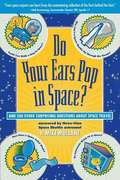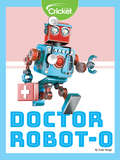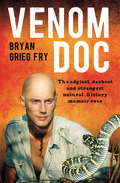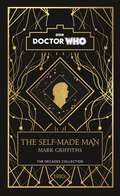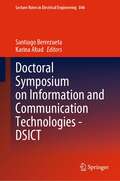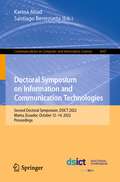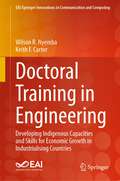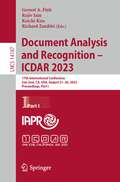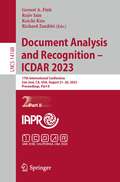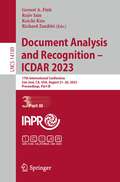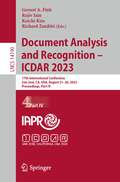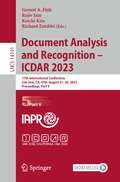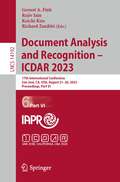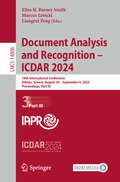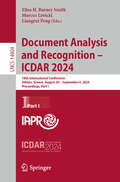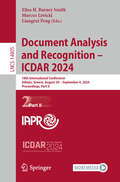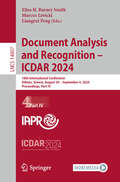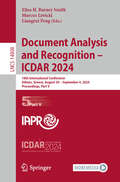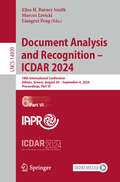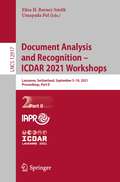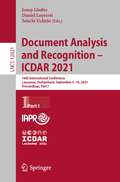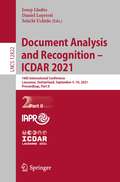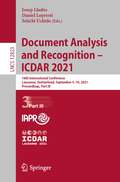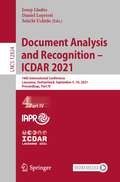- Table View
- List View
Do Your Ears Pop in Space and 500 Other Surprising Questions About Space Travel
by R. Mike Mullane"An excellent reference. This book has to be on the shelf of every space buff. " --James Lovell, Commander, Apollo 13. Get the inside story on outer space from three-time shuttle astronaut R. Mike Mullane. "A fascinating collection of honest, factual, from-the-heart answers to the most often asked questions about spaceflight and spacefliers. Required reading for all who aspire to travel in space. " --Kathy Thornton, 4-mission Shuttle Astronaut, World Record Holder for Spacewalks by a Woman. "A brilliant addition to the understanding of space flight. Only a man who has been there--outer space--and done that--fly the Space Shuttle--could render the complexities of flying in space so lucidly. " --Walter J. Boyne, Colonel, USAF (Ret. ), Former Director, National Air and Space Museum. "A highly informative inside view of what astronauts really experience in space. " --Ed Buckbee, Former Director, U. S. Space & Rocket and U. S. Space Camp. "All astronauts have been peppered with great questions. Mike Mullane has great answers. " --Vice Admiral Richard H. Truly, U. S. Navy (Ret. ), Columbia 1981, Challenger 1983, NASA Administrator 1989-1992.
Do the Gulf Oil-Producing Countries Influence Regional Growth? The Impact of Financial and Remittance Flows
by Nadeem Ilahi Riham ShendyA report from the International Monetary Fund.
Doctor Robot-O
by Lela NargiCan you imagine visiting a doctor's office for an illness or injury, but getting treated by a robot instead? According to some researchers, this could be the reality in the not too distant future. Ongoing research into artificial intelligence and its use in medicine might someday produce robots that will work alongside human doctors and nurses to deliver the best health care possible.
Doctor Venom
by Bryan Grieg FryMeet venomologist Bryan Grieg Fry, the man with one of the most dangerous job in Australia - working with the world's most deadly creatures.Welcome to the strange and dangerous world of Doctor Venom.Imagine a first date involving three weeks in Siberia catching venomous water shrews, and later a wedding attended by Eastern European prime ministers and their bodyguards wielding machine guns. Then a life of living and working with snakes. Lots of very, very poisonous snakes and other venomous creatures ... everything from the Malaysian king cobra to deadly scorpions.In this action-packed ride through Bryan Grieg Fry's life you'll meet the man who's worked with the world's most venomous creatures in over 50 countries. He's been bitten by 26 poisonous snakes and three stingrays - and, while deep in the Amazon jungle, survived a near-fatal scorpion sting. He's also broken 23 bones, including breaking his back in three places, and had to learn how to walk again. He only works on venom that he has collected himself - so the adventures, and danger, will just keep coming...Bryan now divides his time between scientific research and teaching at the University of Queensland, and TV filming and collecting expeditions around the world.
Doctor Who: a 1980s story
by Mark Griffiths Doctor Who*Part of the six books for six decades collection*Midnight, 1984.In a sprawling, run-down housing estate in south London, a man returning from a night out in the West End finds himself pursued by a strange hooded figure.So naturally when the Doctor and Romana arrive in the TARDIS the next day, they find themselves in the middle of a crime scene.But when child genius Matthew Pickles - inventor of a hugely popular handheld videogame - arrives to help them crack the case, they discover there is more to this than meets the eye.Someone has been messing with technology that's not of this earth, blurring the lines between human . . . and cyber. And it looks like they're out for revenge.In a world on the brink of gadgets and gismos and dangerous tech, the pair must uncover the killer, before they strike again.
Doctoral Symposium on Information and Communication Technologies - DSICT (Lecture Notes in Electrical Engineering #846)
by Santiago Berrezueta Karina AbadInformation and communication technologies have provided great advances in fields such as medicine, industry, telecommunications, education, environmental protection, and more. The first edition of DSICT presents researches, advances and new challenges for ICTs in the above-mentioned fields through a collection of selected articles. All these contributions have been presented during the Doctoral Symposium on Information and Communication Technologies that brought together experts from various parts of the world to discuss and share what will be the starting points for new lines of research and working groups in the field of ICT. Professionals and researchers in the field of ICT will find in this book significant contributions to their research. Because of the breadth of the application of ICT, this book will also be useful for businessmen and entrepreneurs in the field of technology. They will be able to learn about the latest ICT applications and their future projections.
Doctoral Symposium on Information and Communication Technologies: Second Doctoral Symposium, DSICT 2022, Manta, Ecuador, October 12–14, 2022, Proceedings (Communications in Computer and Information Science #1647)
by Santiago Berrezueta Karina AbadThis book constitutes the refereed proceedings of the Second Doctoral Symposium on Information and Communication Technologies, DSICT 2022, held in Manta, Ecuador, in October 2022. The 15 full papers were thoroughly reviewed and selected from the 72 submissions. The papers present research in areas of intelligent systems, artificial intelligence, ICTs and their applications to the real world.
Doctoral Training in Engineering: Developing Indigenous Capacities and Skills for Economic Growth in Industrialising Countries (EAI/Springer Innovations in Communication and Computing)
by Wilson R. Nyemba Keith F. CarterThe book provides a comprehensive analysis of Engineering Education in industrialising countries, with Southern Africa as the case study, benchmarked on institutions from the industrialised world, with UK institutions as the reference. This was motivated by the perennial shortage of engineers and engineering skills to drive industry in Southern Africa, compounded by the mismatch of skills between those produced by tertiary institutions and those required by industry. This book focuses on the insufficiencies in training, through addressing the gap where the majority of engineering academics’ qualifications at MSc/MEng level fall short of the internationally acceptable PhD/DEng/DTech. In order to address such insufficiencies, the book proposes and advocates for reskilling and doctoral training of engineering academics through the proposed and established DTCs within the region. The book is targeted at graduate students, engineering academics, researchers, university administrators, foreign aid agencies, captains of industry and policy-makers in governments. To all these readers, the book offers:
Document Analysis and Recognition - ICDAR 2023: 17th International Conference, San José, CA, USA, August 21–26, 2023, Proceedings, Part I (Lecture Notes in Computer Science #14187)
by Gernot A. Fink Koichi Kise Rajiv Jain Richard ZanibbiThis six-volume set of LNCS 14187, 14188, 14189, 14190, 14191 and 14192 constitutes the refereed proceedings of the 17th International Conference on Document Analysis and Recognition, ICDAR 2023, held in San José, CA, USA, in August 2023. The 53 full papers were carefully reviewed and selected from 316 submissions, and are presented with 101 poster presentations. The papers are organized into the following topical sections: Graphics Recognition, Frontiers in Handwriting Recognition, Document Analysis and Recognition.
Document Analysis and Recognition - ICDAR 2023: 17th International Conference, San José, CA, USA, August 21–26, 2023, Proceedings, Part II (Lecture Notes in Computer Science #14188)
by Gernot A. Fink Koichi Kise Rajiv Jain Richard ZanibbiThis six-volume set of LNCS 14187, 14188, 14189, 14190, 14191 and 14192 constitutes the refereed proceedings of the 17th International Conference on Document Analysis and Recognition, ICDAR 2021, held in San José, CA, USA, in August 2023. The 53 full papers were carefully reviewed and selected from 316 submissions, and are presented with 101 poster presentations. The papers are organized into the following topical sections: Graphics Recognition, Frontiers in Handwriting Recognition, Document Analysis and Recognition.
Document Analysis and Recognition - ICDAR 2023: 17th International Conference, San José, CA, USA, August 21–26, 2023, Proceedings, Part III (Lecture Notes in Computer Science #14189)
by Gernot A. Fink Koichi Kise Rajiv Jain Richard ZanibbiThis six-volume set of LNCS 14187, 14188, 14189, 14190, 14191 and 14192 constitutes the refereed proceedings of the 17th International Conference on Document Analysis and Recognition, ICDAR 2021, held in San José, CA, USA, in August 2023. The 53 full papers were carefully reviewed and selected from 316 submissions, and are presented with 101 poster presentations. The papers are organized into the following topical sections: Graphics Recognition, Frontiers in Handwriting Recognition, Document Analysis and Recognition.
Document Analysis and Recognition - ICDAR 2023: 17th International Conference, San José, CA, USA, August 21–26, 2023, Proceedings, Part IV (Lecture Notes in Computer Science #14190)
by Gernot A. Fink Koichi Kise Rajiv Jain Richard ZanibbiThis six-volume set of LNCS 14187, 14188, 14189, 14190, 14191 and 14192 constitutes the refereed proceedings of the 17th International Conference on Document Analysis and Recognition, ICDAR 2021, held in San José, CA, USA, in August 2023. The 53 full papers were carefully reviewed and selected from 316 submissions, and are presented with 101 poster presentations. The papers are organized into the following topical sections: Graphics Recognition, Frontiers in Handwriting Recognition, Document Analysis and Recognition.
Document Analysis and Recognition - ICDAR 2023: 17th International Conference, San José, CA, USA, August 21–26, 2023, Proceedings, Part V (Lecture Notes in Computer Science #14191)
by Gernot A. Fink Koichi Kise Rajiv Jain Richard ZanibbiThis six-volume set of LNCS 14187, 14188, 14189, 14190, 14191 and 14192 constitutes the refereed proceedings of the 17th International Conference on Document Analysis and Recognition, ICDAR 2021, held in San José, CA, USA, in August 2023. The 53 full papers were carefully reviewed and selected from 316 submissions, and are presented with 101 poster presentations. The papers are organized into the following topical sections: Graphics Recognition, Frontiers in Handwriting Recognition, Document Analysis and Recognition.
Document Analysis and Recognition - ICDAR 2023: 17th International Conference, San José, CA, USA, August 21–26, 2023, Proceedings, Part VI (Lecture Notes in Computer Science #14192)
by Gernot A. Fink Koichi Kise Rajiv Jain Richard ZanibbiThis six-volume set of LNCS 14187, 14188, 14189, 14190, 14191 and 14192 constitutes the refereed proceedings of the 17th International Conference on Document Analysis and Recognition, ICDAR 2021, held in San José, CA, USA, in August 2023. The 53 full papers were carefully reviewed and selected from 316 submissions, and are presented with 101 poster presentations. The papers are organized into the following topical sections: Graphics Recognition, Frontiers in Handwriting Recognition, Document Analysis and Recognition.
Document Analysis and Recognition - ICDAR 2024: 18th International Conference, Athens, Greece, August 30 – September 4, 2024, Proceedings, Part III (Lecture Notes in Computer Science #14806)
by Elisa H. Barney Smith Marcus Liwicki Liangrui PengThis six-volume set LNCS 14804-14809 constitutes the proceedings of the 18th International Conference on Document Analysis and Recognition, ICDAR 2024, held in Athens, Greece, during August 30–September 4, 2024. The total of 144 full papers presented in these proceedings were carefully selected from 263 submissions. The papers reflect topics such as: document image processing; physical and logical layout analysis; text and symbol recognition; handwriting recognition; document analysis systems; document classification; indexing and retrieval of documents; document synthesis; extracting document semantics; NLP for document understanding; office automation; graphics recognition; human document interaction; document representation modeling and much more.
Document Analysis and Recognition - ICDAR 2024: 18th International Conference, Athens, Greece, August 30–September 4, 2024, Proceedings, Part I (Lecture Notes in Computer Science #14804)
by Elisa H. Barney Smith Marcus Liwicki Liangrui PengThis six-volume set LNCS 14804-14809 constitutes the proceedings of the 18th International Conference on Document Analysis and Recognition, ICDAR 2024, held in Athens, Greece, during August 30–September 4, 2024. The total of 144 full papers presented in these proceedings were carefully selected from 263 submissions. The papers reflect topics such as: Document image processing; physical and logical layout analysis; text and symbol recognition; handwriting recognition; document analysis systems; document classification; indexing and retrieval of documents; document synthesis; extracting document semantics; NLP for document understanding; office automation; graphics recognition; human document interaction; document representation modeling and much more.
Document Analysis and Recognition - ICDAR 2024: 18th International Conference, Athens, Greece, August 30–September 4, 2024, Proceedings, Part II (Lecture Notes in Computer Science #14805)
by Elisa H. Barney Smith Marcus Liwicki Liangrui PengThis six-volume set LNCS 14804-14809 constitutes the proceedings of the 18th International Conference on Document Analysis and Recognition, ICDAR 2024, held in Athens, Greece, during August 30–September 4, 2024. The total of 144 full papers presented in these proceedings were carefully selected from 263 submissions. The papers reflect topics such as: document image processing; physical and logical layout analysis; text and symbol recognition; handwriting recognition; document analysis systems; document classification; indexing and retrieval of documents; document synthesis; extracting document semantics; NLP for document understanding; office automation; graphics recognition; human document interaction; document representation modeling and much more.
Document Analysis and Recognition - ICDAR 2024: 18th International Conference, Athens, Greece, August 30–September 4, 2024, Proceedings, Part IV (Lecture Notes in Computer Science #14807)
by Elisa H. Barney Smith Marcus Liwicki Liangrui PengThis six-volume set LNCS 14804-14809 constitutes the proceedings of the 18th International Conference on Document Analysis and Recognition, ICDAR 2024, held in Athens, Greece, during August 30–September 4, 2024. The total of 144 full papers presented in these proceedings were carefully selected from 263 submissions. The papers reflect topics such as: document image processing; physical and logical layout analysis; text and symbol recognition; handwriting recognition; document analysis systems; document classification; indexing and retrieval of documents; document synthesis; extracting document semantics; NLP for document understanding; office automation; graphics recognition; human document interaction; document representation modeling and much more.
Document Analysis and Recognition - ICDAR 2024: 18th International Conference, Athens, Greece, August 30–September 4, 2024, Proceedings, Part V (Lecture Notes in Computer Science #14808)
by Elisa H. Barney Smith Marcus Liwicki Liangrui PengThis six-volume set LNCS 14804-14809 constitutes the proceedings of the 18th International Conference on Document Analysis and Recognition, ICDAR 2024, held in Athens, Greece, during August 30–September 4, 2024. The total of 144 full papers presented in these proceedings were carefully selected from 263 submissions. The papers reflect topics such as: document image processing; physical and logical layout analysis; text and symbol recognition; handwriting recognition; document analysis systems; document classification; indexing and retrieval of documents; document synthesis; extracting document semantics; NLP for document understanding; office automation; graphics recognition; human document interaction; document representation modeling and much more.
Document Analysis and Recognition - ICDAR 2024: 18th International Conference, Athens, Greece, August 30–September 4, 2024, Proceedings, Part VI (Lecture Notes in Computer Science #14809)
by Elisa H. Barney Smith Marcus Liwicki Liangrui PengThis six-volume set LNCS 14804-14809 constitutes the proceedings of the 18th International Conference on Document Analysis and Recognition, ICDAR 2024, held in Athens, Greece, during August 30–September 4, 2024. The total of 144 full papers presented in these proceedings were carefully selected from 263 submissions. The papers reflect topics such as: document image processing; physical and logical layout analysis; text and symbol recognition; handwriting recognition; document analysis systems; document classification; indexing and retrieval of documents; document synthesis; extracting document semantics; NLP for document understanding; office automation; graphics recognition; human document interaction; document representation modeling and much more.
Document Analysis and Recognition – ICDAR 2021 Workshops: Lausanne, Switzerland, September 5–10, 2021, Proceedings, Part II (Lecture Notes in Computer Science #12917)
by Elisa H. Barney Smith Umapada PalThis book constitutes the proceedings of the international workshops co-located with the 16th International Conference on Document Analysis and Recognition, ICDAR 2021, held in Lausanne, Switzerland, in September 2021.The total of 59 full and 12 short papers presented in this book were carefully selected from 96 submissions and divided into two volumes. Part II contains 30 full and 8 short papers that stem from the following meetings: Workshop on Machine Learning (WML); Workshop on Open Services and Tools for Document Analysis (OST); Workshop on Industrial Applications of Document Analysis and Recognition (WIADAR); Workshop on Computational Paleography (IWCP); Workshop on Document Images and Language (DIL); Workshop on Graph Representation Learning for Scanned Document Analysis (GLESDO).
Document Analysis and Recognition – ICDAR 2021: 16th International Conference, Lausanne, Switzerland, September 5–10, 2021, Proceedings, Part I (Lecture Notes in Computer Science #12821)
by Daniel Lopresti Josep Lladós Seiichi UchidaThis four-volume set of LNCS 12821, LNCS 12822, LNCS 12823 and LNCS 12824, constitutes the refereed proceedings of the 16th International Conference on Document Analysis and Recognition, ICDAR 2021, held in Lausanne, Switzerland in September 2021. The 182 full papers were carefully reviewed and selected from 340 submissions, and are presented with 13 competition reports.The papers are organized into the following topical sections: historical document analysis, document analysis systems, handwriting recognition, scene text detection and recognition, document image processing, natural language processing (NLP) for document understanding, and graphics, diagram and math recognition.
Document Analysis and Recognition – ICDAR 2021: 16th International Conference, Lausanne, Switzerland, September 5–10, 2021, Proceedings, Part II (Lecture Notes in Computer Science #12822)
by Daniel Lopresti Josep Lladós Seiichi UchidaThis four-volume set of LNCS 12821, LNCS 12822, LNCS 12823 and LNCS 12824, constitutes the refereed proceedings of the 16th International Conference on Document Analysis and Recognition, ICDAR 2021, held in Lausanne, Switzerland in September 2021. The 182 full papers were carefully reviewed and selected from 340 submissions, and are presented with 13 competition reports.The papers are organized into the following topical sections: document analysis for literature search, document summarization and translation, multimedia document analysis, mobile text recognition, document analysis for social good, indexing and retrieval of documents, physical and logical layout analysis, recognition of tables and formulas, and natural language processing (NLP) for document understanding.
Document Analysis and Recognition – ICDAR 2021: 16th International Conference, Lausanne, Switzerland, September 5–10, 2021, Proceedings, Part III (Lecture Notes in Computer Science #12823)
by Daniel Lopresti Josep Lladós Seiichi UchidaThis four-volume set of LNCS 12821, LNCS 12822, LNCS 12823 and LNCS 12824, constitutes the refereed proceedings of the 16th International Conference on Document Analysis and Recognition, ICDAR 2021, held in Lausanne, Switzerland in September 2021. The 182 full papers were carefully reviewed and selected from 340 submissions, and are presented with 13 competition reports.The papers are organized into the following topical sections: extracting document semantics, text and symbol recognition, document analysis systems, office automation, signature verification, document forensics and provenance analysis, pen-based document analysis, human document interaction, document synthesis, and graphs recognition.
Document Analysis and Recognition – ICDAR 2021: 16th International Conference, Lausanne, Switzerland, September 5–10, 2021, Proceedings, Part IV (Lecture Notes in Computer Science #12824)
by Daniel Lopresti Josep Lladós Seiichi UchidaThis four-volume set of LNCS 12821, LNCS 12822, LNCS 12823 and LNCS 12824, constitutes the refereed proceedings of the 16th International Conference on Document Analysis and Recognition, ICDAR 2021, held in Lausanne, Switzerland in September 2021. The 182 full papers were carefully reviewed and selected from 340 submissions, and are presented with 13 competition reports.The papers are organized into the following topical sections: scene text detection and recognition, document classification, gold-standard benchmarks and data sets, historical document analysis, and handwriting recognition. In addition, the volume contains results of 13 scientific competitions held during ICDAR 2021.
